The breeding periods vary more or less late depending on where it lives.
The gilthead seabream uses its molar-shaped teeth to break the shells of the mussels and crabs on which it feeds.
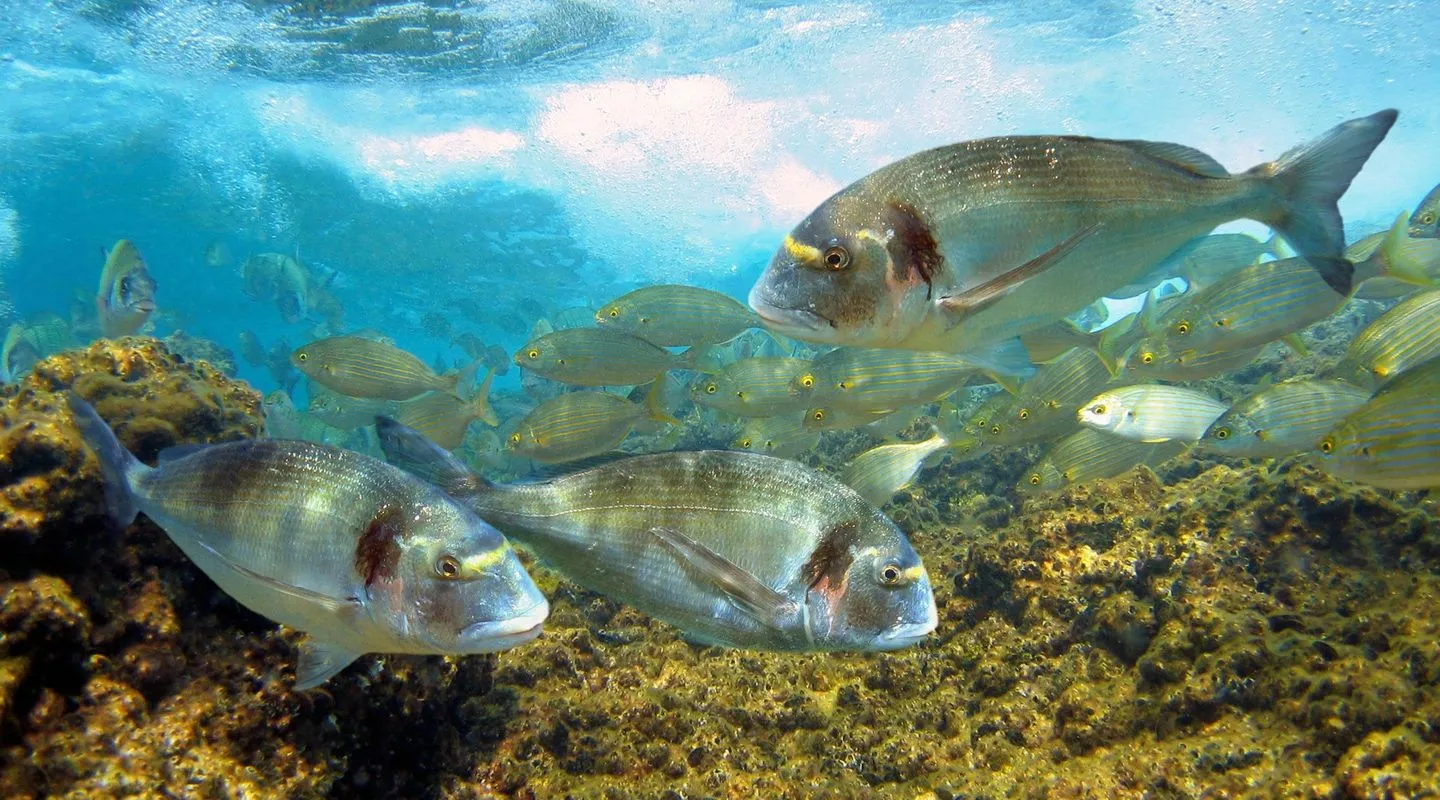
Cold and temperate sea fish
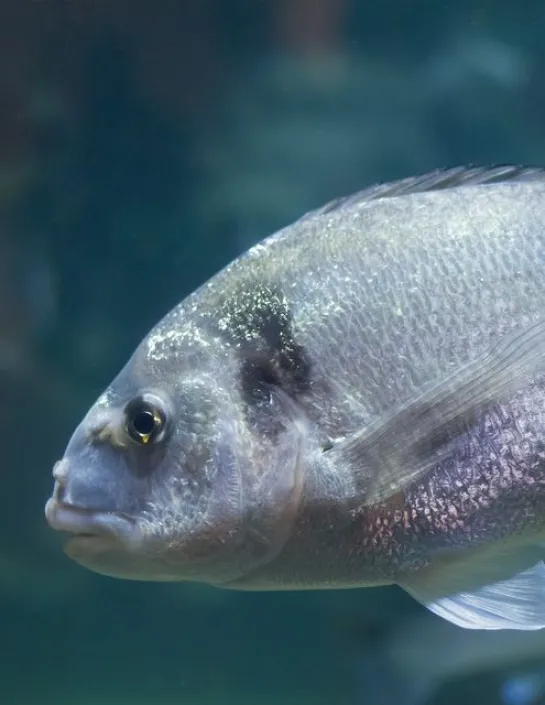
Identity card
Not evaluated
Mediterranean Sea, East Atlantic and south of Brittany. In the southern British Isles, the Black Sea. Strait of Dover.
The gilthead seabream lives along the coast, sometimes venturing into brackish waters down to a depth of 30 metres.
When fully grown, it measures between 20 and 50 cm on average.
Mussels, crabs, fish and sometimes even algae.
11 years
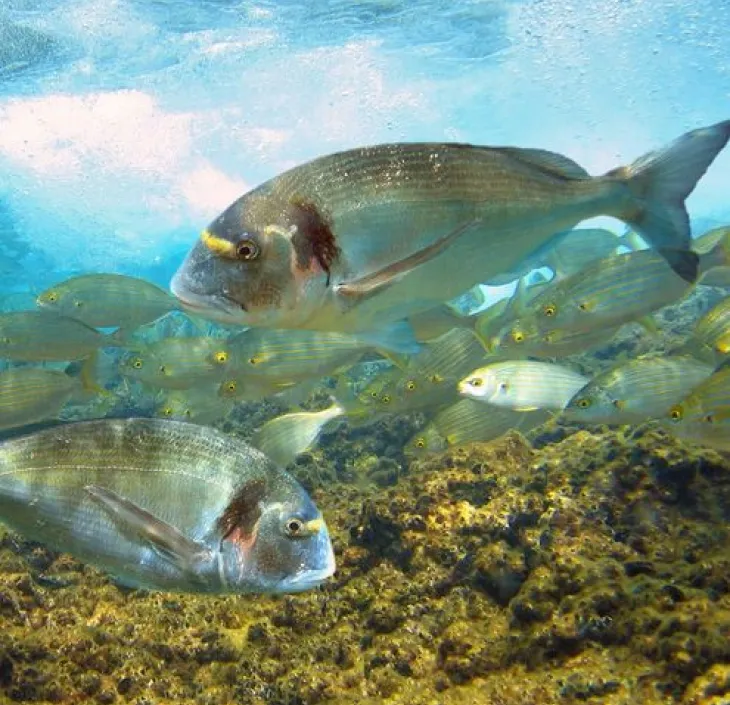
The breeding periods for gilthead seabream vary depending on where the species is located.
The breeding periods vary more or less late depending on where it lives.
The gilthead seabream uses its molar-shaped teeth to break the shells of the mussels and crabs on which it feeds.
The gilthead seabream lives along the coast, sometimes venturing into brackish waters down to a depth of 30 metres. Sighted in the Mediterranean Sea, East Atlantic and south of Brittany. It has also been sighted in the southern British Isles, the Black Sea and even in the Strait of Dover.
The gilthead seabream can be recognised by the gold stripe on its forehead, located between the eyes. It is also known as the royal seabream. It gets its name gilthead from the gold stripe that is reminiscent of the shape of a crown.
It has a black spot at the base of the lateral line, its sides are silver-grey and have an oval shape. When fully grown, it measures between 20 and 50 cm on average.
Gilthead seabream change sex during their lifetime. They are born male and later become female after 3 years. Therefore, they are sequential hermaphrodites.
The Mankind and Shores exhibition
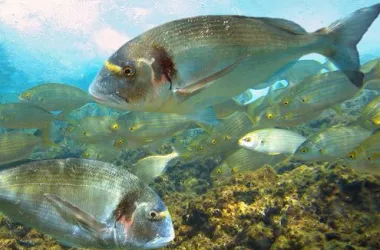
The Ocean Mag
In the spotlight
Poissons, crevettes, requins, les animaux qui se reproduisent ou sont élevés à Nausicaá rejoignent les espaces d'exposition.
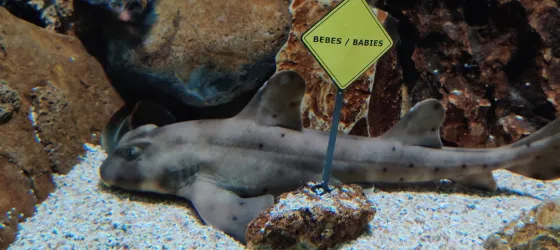
Article
Which came first, the egg or the fish? A brief overview of eggs and reproductive strategies in marine animals.
Article
Coral, the planet's largest builder, is a fragile and threatened animal.